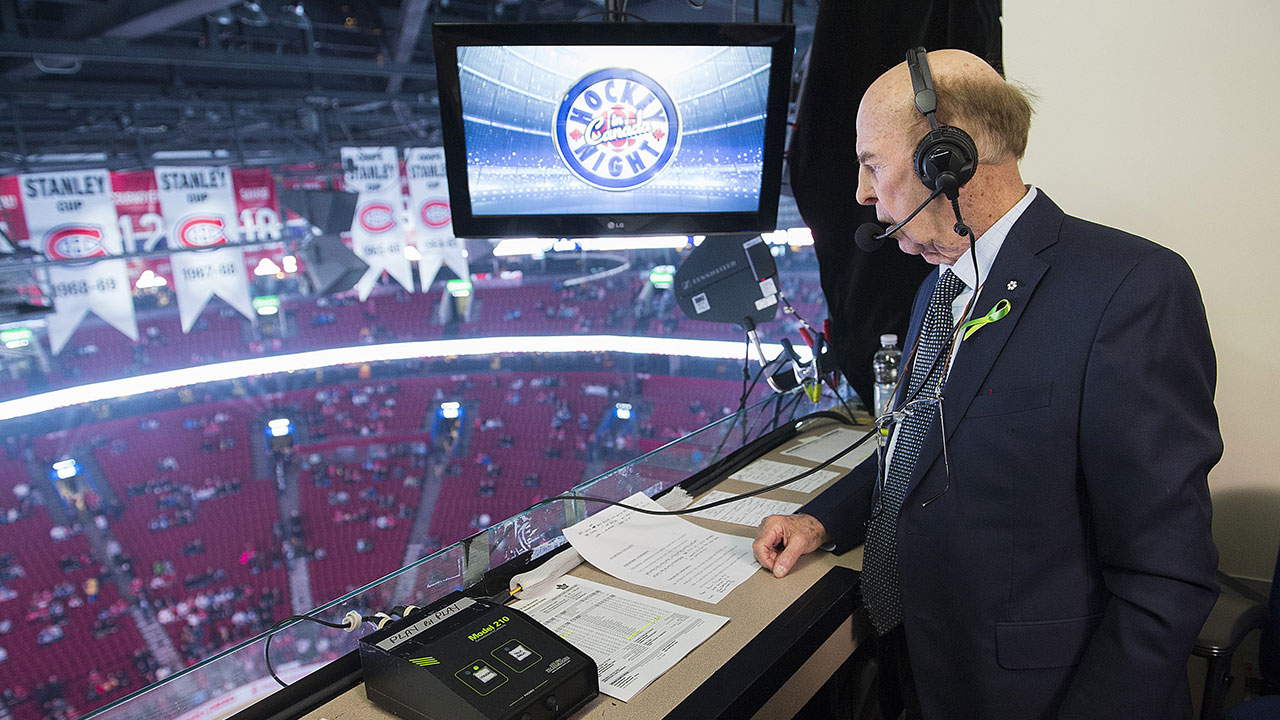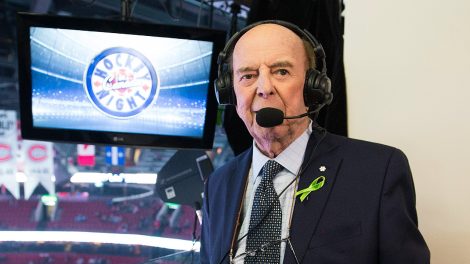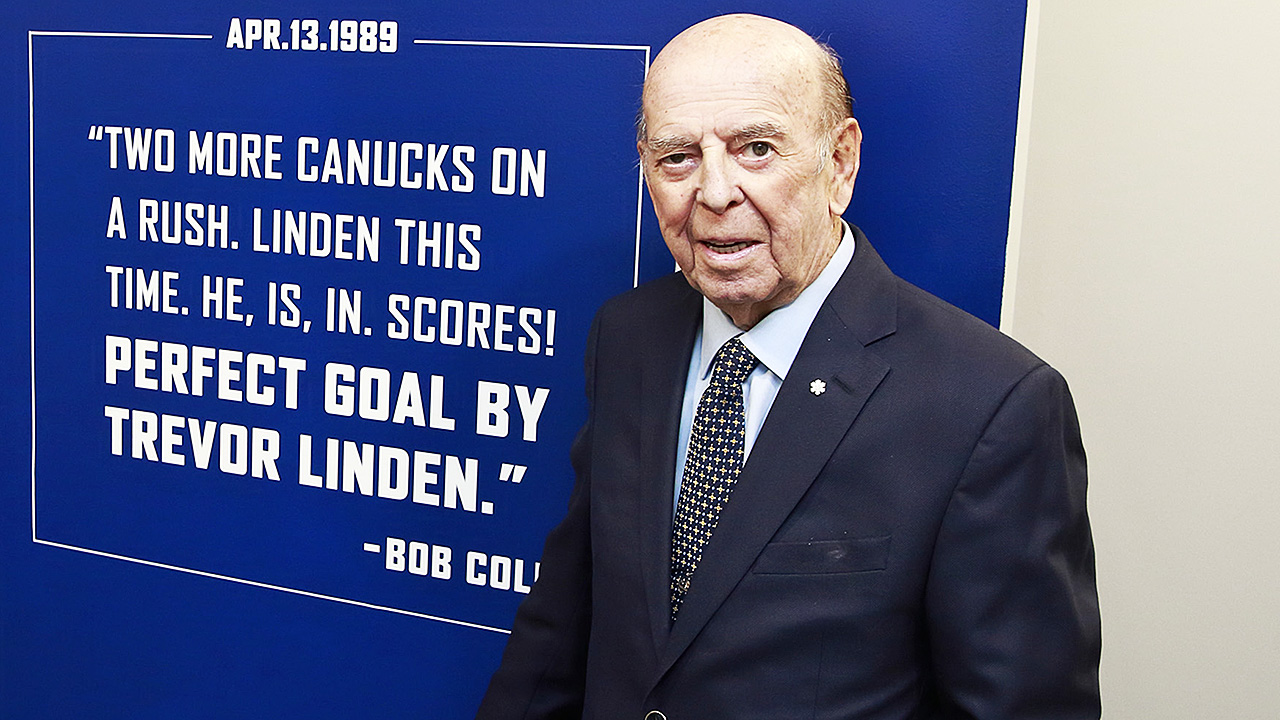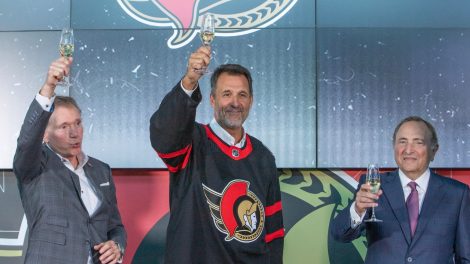Jaws dropped and — more importantly — eyes opened on the evening of Feb. 26, 2015, when the Toronto Maple Leafs traded David Clarkson to the Columbus Blue Jackets for injured Nathan Horton.
If a general manager has money in the bank and space on the books, hockey fans realized, even the most cumbersome of athlete contracts can be moved. You’ll have to pay for a sharpened spoon, but there are ways to tunnel your team out of salary-cap jail.
Since then, we’ve seen hefty contracts of permanently injured, essentially retired, or soon-to-be-retired players traded to help clear a cap-crunched club’s books while a more cap-flexible GM scoops a draft pick or prospect for assuming another man’s burden.
Just because Dave Bolland, Pavel Datsyuk and Chris Pronger weren’t playing nor planning to play in the NHL didn’t prevent them from getting a new “Property of…” T-shirt.
Bryan Bickell’s trade in June 2016 helped Chicago’s cap situation and landed Carolina Teuvo Teravainen. Marc Savard went from the Bruins to the Panthers to the Devils all from the comfort of his home, while Florida scooped top-six forward Reilly Smith and New Jersey landed a second-round pick as happy book-balancing byproducts.
We take an early look at this off-season to see which teams are already pressed tight against 2017-18’s projected cap of $76 million and a handful of spendthrift clubs they could turn to for trade help.
[relatedlinks]
5 TEAMS FEELING THE CAP CRUNCH
 Chicago Blackhawks Projected 2017-18 cap space: -$4.52 million
Chicago Blackhawks Projected 2017-18 cap space: -$4.52 million
The 2015 Stanley Cup champions are the league’s only team already in the red when it comes to money committed to players for 2017-18.
GM Stan Bowman characterized his club’s sweep to the hands of Cup finalist Nashville in Round 1 of the playoffs as a “complete failure.” He threatened change.
Assistant coach Mike Kitchen was fired. Backup goalie Scott Darling was traded to Carolina because there was no money to keep him. Twenty-six-year-olds Richard Panik ($5.6 million for two years) and Michal Kempny ($900,000 for one year) both re-signed relatively quickly.
Bowman hinted that he’s looking to re-sign RFA forward Tomas Jurco, a 24-year-old deadline acquisition whose limited production won’t give the player much bargaining power.
Veteran defencemen Johnny Oduya and Brian Campbell, who both returned to Chicago for a second run, are likely to walk as UFAs.
But more money must be shed. This is what happens when you dress two $10.5-million superstars.
Depth centre Marcus Krueger, 27, is coming off a down year but makes more than $3 million. Brent Seabrook is an excellent defenceman, but at 32, the alternate captain’s $6.875-million cap hit (and no-move clause) through 2023-24 is tough to swallow. Can he be moved?
How about Marian Hossa, who is 38 with a $5.275-million hit?
Hossa’s heavily front-loaded contract is interesting. The two-way winger carries a high hit, but he’ll actually come cheap. Hossa only makes $1 million in real dollars for each of the the next four seasons, making him a perfect trade candidate for a team more concerned about the floor than the ceiling.
 New York Islanders Projected 2017-18 cap space: $2.04 million
New York Islanders Projected 2017-18 cap space: $2.04 million
More than any other NHL team, the Islanders’ 2017-18 roster is essentially set, with 38 contracts already in place.
Saying that, dependable RFA defenceman Calvin De Haan, 26, and UFA goaltender Jean-Francois Berube are both gunning for raises.
GM Garth Snow has had quality goaltender Jaroslav Halak ($3.33-million cap hit through 2017-18) on the block for months, and young, entry-level players like Josh Ho-Sang will push for more permanent roles.
If Snow wants to bring in a big ticket, such as a John Tavares triggerman—Ilya Kovalchuk has a rumoured preference to return to the New York area—an expensive piece must be bought out, expansion-drafted or traded.
 Anaheim Ducks Projected 2017-18 cap space: $2.32 million
Anaheim Ducks Projected 2017-18 cap space: $2.32 million
We dived deeper into the Ducks’ tricky off-season here, but suffice it to say, something’s gotta give for the most cap-strapped team in the Western Conference.
That Anaheim’s contending window is still open means GM Bob Murray will keep the bulk of his current roster—however expensive—in place. When you consider that UFA winger Patrick Eaves needs to be re-signed or replaced and that Anaheim doesn’t have a backup goalie under contract yet, we feel safe betting a defenceman or two will be moved out. Anaheim has six of them making between $3.35 million and $5.21 million.
Kevin Bieksa has a no-move clause, which could block a trade or prevent him from expansion draft exposure. Both Hampus Lindholm and Sami Vatanen require months of shoulder rehab. And Cam Fowler is reportedly ready to engage in extension talks.
Lots of factors to consider, but we see a greater chance of a real hockey trade here versus a pure salary dump to one of the cap-flush clubs listed below. One way or another, Vegas should be able to land something of worth from Murray.
 Columbus Blue Jackets Projected 2017-18 cap space: $2.94 million
Columbus Blue Jackets Projected 2017-18 cap space: $2.94 million
“Every year people are so concerned about our cap,” Blue Jackets GM Jarmo Kekalainen told Sportsnet’s Elliotte Friedman. “Last year they thought we’d have serious problems. We didn’t. I expect zero problems next year.”
Perhaps Kekalainen won’t have any problem re-signing or replacing Sam Gagner (UFA), Lauri Korpikoski (UFA), Josh Anderson (RFA), Alexander Wennberg (RFA), Kyle Quincey (UFA) and one of his young backup goalies (Anton Forsberg or Joonas Korpisalo, both RFA) with less than $3 million in cap space.
If Pierre-Luc Dubois is ready to step up to the NHL level, he’ll represent an inexpensive body.
We expect a move for forward Scott Hartnell ($4.75 million cap hit through 2018-19), either via trade or buyout, could provide financial breathing room. And if Kekalainen can nudge Vegas to draft Jack Johnson ($4.36 million cap hit), that could do the trick as well.
 St. Louis Blues Projected 2017-18 cap space: $4.46 million
St. Louis Blues Projected 2017-18 cap space: $4.46 million
When the Blues completely overhauled their assistant coaching staff to ready themselves for the first full campaign with Mike Yeo at the helm, that was seen by many as the big off-season shift in St. Louis.
Smaller decisions need to be made on impending free agents Scottie Upshall, Nail Yakupov and Magnus Paajarvi, but 24-year-old Colton Parayko’s new deal alone should command more than the $4.46 million the Blues have left to spend at the moment.
Still, this is perennial playoff team seemingly forever looking to score more goals. That’s why you hear names like Jonathan Drouin and Jordan Eberle linked to them in rumours. In order to sign Parayko and upgrade its top six, St. Louis would need to lose someone like Jori Lehtera, David Perron or Carl Gunnarsson in the Vegas draft or via trade.
5 TEAMS BLESSED WITH TIME AND SPACE
 Winnipeg Jets Projected 2017-18 cap space: $18.77 million
Winnipeg Jets Projected 2017-18 cap space: $18.77 million
Ever patient, GM Kevin Cheveldayoff has managed the Jets’ budget well, and his core forwards and defencemen are all under contract for the fall.
Will Cheveldayoff feel enough pressure from an increasingly antsy fan base to return to the playoffs that he spends on a veteran goaltender to work alongside Connor Hellebuyck? Perhaps Halak could be had at a discount if Snow would rather spend his millions elsewhere?
The Jets are hardly a cap team, but they have enough room to take on a year of bad money in 2017-18. After that, the price on core pieces Bryan Little, Nikolaj Ehlers and Jacob Trouba—all free agents in summer 2018—goes up.
 New Jersey Devils Projected 2017-18 cap space: $21.33 million
New Jersey Devils Projected 2017-18 cap space: $21.33 million
Guiding a rebuilding squad in the sport’s toughest division, GM Ray Shero knows the Devils’ future is not now. The Devils won the draft lottery and have five extra picks in the next two years.
They need to spend a bit on Keith Kinkaid or another backup goalie for Cory Schneider (who, reportedly, is not on the trade block) and give a nice raise to 22-year-old RFA defenceman Damon Severson.
But even with bad-on-paper contracts to Travis Zajac and Ryane Clowe on the books, Shero has the ability to swallow some bad money if it accelerates the rebuild.
 Arizona Coyotes Projected 2017-18 cap space: $25.87 million
Arizona Coyotes Projected 2017-18 cap space: $25.87 million
No team has been so quick to use its cap space as a weapon than the Coyotes. Now that John Chayka is free of Datsyuk and Pronger’s contracts (but, hey, they’re still paying Bolland for two more seasons), you wonder if the NHL’s youngest GM would feel comfortable swallowing more bad money for a delayed payoff.
The ‘Yotes have plenty of young, cheap labour up front. Max Domi, Lawson Crouse and Christian Dvorak are all on their entry-level deals, and Memorial Cup MVP Dylan Strome should make the cut in the fall.
But familiar veterans Radim Vrbata, 35, and Shane Doan, 40, are both headed to unrestricted free agency and there’s no guarantee they come back. Some experience should be added to the mix. The Islanders and Blackhawks have plenty of 30-something forwards. Maybe Hartnell is a good fit here, if the Jackets toss in a pick or prospect.
 Carolina Hurricanes Projected 2017-18 cap space: $27.39 million
Carolina Hurricanes Projected 2017-18 cap space: $27.39 million
We see the Hurricanes farther along in their (re)building process than the Devils, Coyotes or Knights. In 2017-18, this could be the team that, like the 2016-17 Maple Leafs or Blue Jackets, takes a giant step into the post-season and makes headlines around the league.
Even after they re-sign Teravainen and Brock McGinn, there will be money left over to acquire top-six forward help and/or take on another team’s unwanted contract.
Such is the luxury of having five skilled defencemen under age 26 making less than $1 million each. Things get trickier next summer, when Noah Hanifin, Klas Dahlbeck, Brett Pesce, Ryan Murphy and Jaccob Slavin all come knocking for raises.
 Vegas Golden Knights Projected 2017-18 cap space: $68.5 million
Vegas Golden Knights Projected 2017-18 cap space: $68.5 million
Ah, a blank canvas.
This is what GMs dream of: not inheriting the mistakes of your predecessors.
McPhee’s cap will fill suddenly on June 21. The 30 players selected in his expansion draft must carry a total value that reaches at least $43.8 million (60 percent of 2016-17’s cap ceiling). In other words, he’ll be assuming a chunky contract or two.
No doubt, the five cap-crunched teams in this story are calling.
“Things are moving very quickly,” McPhee told the Las Vegas Review-Journal last week from Windsor, Ont., where he was scouting the Memorial Cup. “Our recent meetings went well and we feel like we’re very prepared. We’ll continue to do our homework right up until the drafts.”
This is a rare opportunity for a shrewd GM or two to unload a regrettable contract and give a player a fresh start with a brand-new team. Vegas wants to be competitive out of the gate to win over fans but won’t realistically be expected to contend for a number of years.
“We’ve had some very good conversations, but nothing has been done yet,” McPhee said. “Mostly, it has been teams calling us, and like I’ve said many times, we’re not going to do a deal just for the sake of doing it. If it will help our hockey club, then we’ll look long and hard at it.”
(Salary cap information via the excellent CapFriendly.com.)









